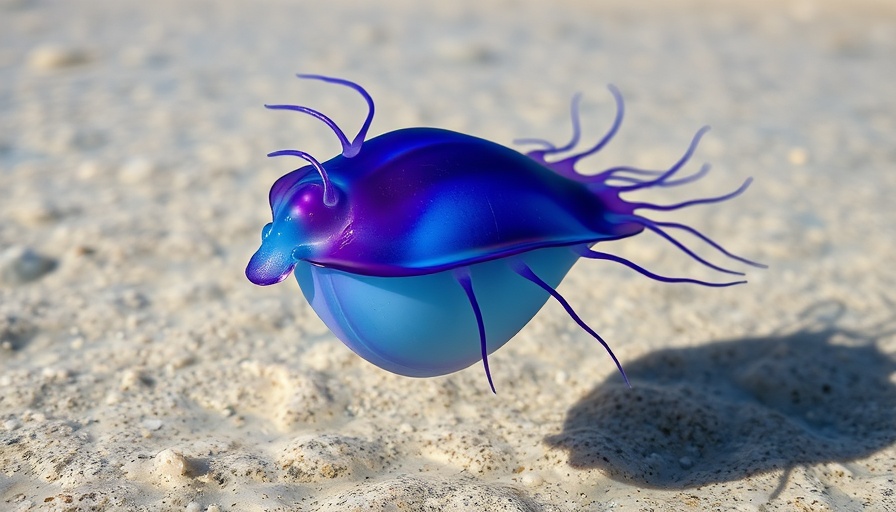
The Fascinating Truth About the Portuguese Man O’ War
For many beachgoers, the Portuguese Man O’ War might seem like a beautiful, floating work of art as it drifts effortlessly along ocean currents. However, a closer look reveals that this enigmatic creature is far more complex than its striking appearance suggests. In fact, the Portuguese Man O’ War isn’t just one species; it is a colonial organism composed of four distinct species working together to form one entity. This fascinating fact can reshape our understanding of marine life and provoke curiosity about the underwater world.
The Species Behind the Beauty
Each of the four species that make up the Portuguese Man O’ War plays a crucial role in its survival. The float, tentacles, digestive and reproductive polyps function as specialized parts, much like a team working together to thrive within their ecosystem. This collaboration enhances the creature’s efficiency in feeding and reproduction, making it a marvel of natural engineering. It’s a reminder that nature’s complexity often goes unnoticed and can teach us valuable lessons about teamwork in our own lives.
Why Knowing This Matters
Understanding that the Portuguese Man O’ War comprises multiple species can enlighten homeowners who value biodiversity in their gardens and landscapes. Just like the Man O’ War relies on its interdependent species, effective gardening often depends on creating a harmonious ecosystem that supports various creatures, plants, and nutrients. This knowledge enables homeowners to cultivate environments that are not only beautiful but biodiverse and supportive of local wildlife.
The Marine Mystique and Home Gardens
Marine ecosystems are as vital as terrestrial gardens and yards. By appreciating the interconnectedness of species in aquatic environments like the Man O’ War, homeowners can reflect this understanding in their own landscaping. Fostering diversity among plants can create lush, thriving landscapes that attract pollinators, birds, and beneficial insects, enhancing both the aesthetics and health of your garden. You might find inspiration in nature’s complexities when planning your outdoor spaces!
Taking Action: What Can You Do?
Incorporating the lessons learned from the Portuguese Man O’ War into your home projects can be both rewarding and beneficial. Start by researching native plants that encourage diversity in your yard. Think about integrating elements that support a wide range of wildlife and consider installation techniques that mimic natural habitats. In doing so, you not only create a beautiful atmosphere but also contribute positively to your local ecosystem.
In Conclusion: Nature’s Lessons for Homeowners
Exploring the mysteries of the Portuguese Man O’ War invites homeowners to see beyond the surface of beauty in nature. As you design your home and garden, remember the lessons of collaboration and interdependence that come from observing the world around you. Embrace biodiversity, create inviting outdoor spaces, and take an active role in nurturing both your home and the environment. So, the next time you see a Portuguese Man O’ War or think of your garden, let both serve as reminders of the incredible complexities of nature!
 Add Row
Add Row  Add
Add 




 Add Row
Add Row  Add
Add 

Write A Comment